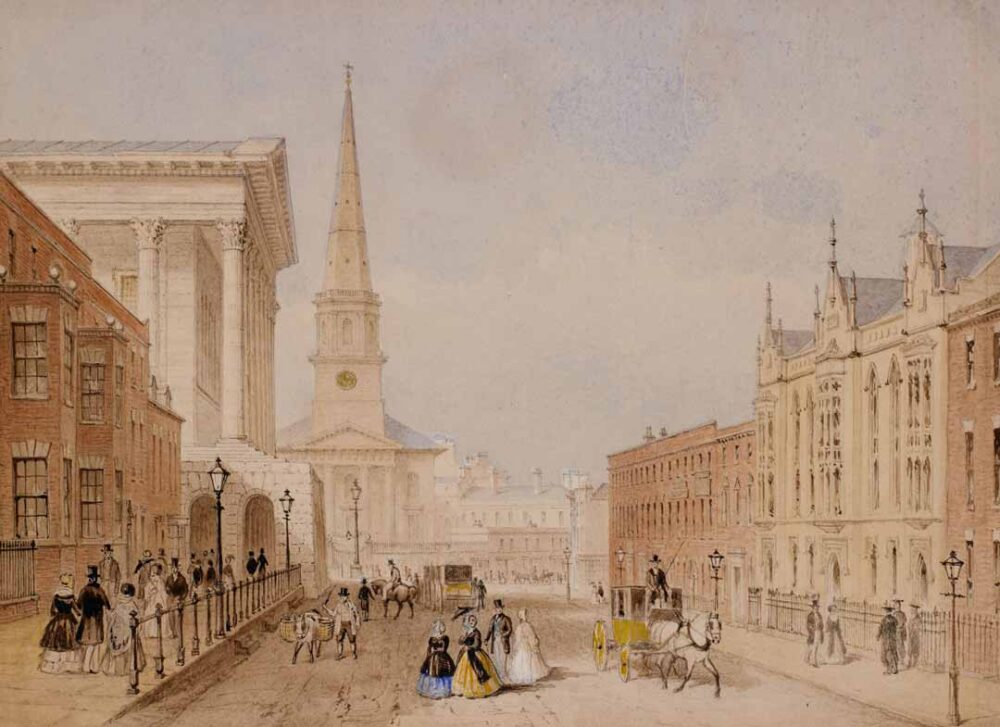History has always been a captivating subject, with stories and events from the past shaping our present and future. However, history isn’t just about facts and dates; it’s a narrative that can be brought to life through art. This is where the role of a historical illustrator becomes crucial.
In this article, we will explore the benefits of incorporating art into history, discussing how historical illustrators can enhance our understanding and appreciation of the past.

The Power of Visual Storytelling
Making History Accessible
History can sometimes seem distant and abstract. Dates, names, and events can blur together, making it challenging for people to connect with the past. However, visual storytelling can bridge this gap. Historical illustrations offer a unique perspective by rendering historical events, places, and people in a visually engaging way. This makes history more accessible and relatable, especially for students and the general public who may not have a deep background in historical studies.
🏆
The 2024 Creative Retail Awards are open for entries.
The Creative Retail Awards are much more than a mere accolade; they represent the pinnacle of achievement in the retail industry. Garnering a nomination or winning one of these awards is a testament to innovation, excellence, and leadership.
www.creativeretailawards.com
Evoking Emotions and Empathy
Art has the remarkable ability to evoke emotions and empathy. A well-crafted historical illustration can transport viewers to a different time and place, helping them empathize with the people who lived in that era. Whether it’s a depiction of a battlefield, a bustling market, or a royal court, historical illustrations enable us to feel a connection with the past, fostering a deeper understanding of the human experience throughout history.
The Role of Historical Illustrators
Bridging Gaps in Historical Records
Historical records are often incomplete or biased, leaving gaps in our understanding of certain events or time periods. This is where historical illustrators shine. They meticulously research and reconstruct historical scenes, bringing to life the missing pieces of the puzzle. By visualizing these gaps, illustrators help historians and enthusiasts alike gain a more comprehensive view of history.
Enhancing Educational Materials
Educational materials play a pivotal role in shaping how students perceive history. Incorporating historical illustrations into textbooks and classroom resources can transform the learning experience. Visual aids not only make the content more engaging but also help students retain information more effectively. A well-illustrated history book can ignite a passion for the subject and encourage students to explore it further.
The Benefits of Historical Illustrations
Providing Context
Historical illustrations offer context, helping viewers understand the environment, clothing, architecture, and technology of a particular era. When reading about ancient Rome, for instance, an accompanying illustration can vividly depict the city’s layout, clothing styles, and transportation methods, making the historical setting come alive.
Visualizing Complex Concepts
History often involves complex geopolitical situations, military strategies, and social dynamics that can be difficult to grasp through text alone. Historical illustrators can simplify and clarify these concepts with visuals, making them more accessible to a broader audience. For example, a map illustrating the changing borders of European countries during the World Wars can make the geopolitical shifts easier to comprehend.
Capturing the Diversity of History
History is rich in diversity, with different cultures, traditions, and lifestyles across time and geography. Historical illustrators play a vital role in showcasing this diversity by accurately representing the people, customs, and environments of various historical periods. This not only enriches our understanding of history but also promotes inclusivity and cultural appreciation.
Breathing Life into Historical Figures
Through historical illustrations, iconic historical figures can be brought to life. Artists can recreate the likeness and personalities of leaders, inventors, artists, and everyday people who left their mark on history. These visual depictions allow us to connect with these figures on a more personal level, humanizing them beyond the pages of a history book.
The Collaborative Process
Research and Accuracy
Creating historically accurate illustrations requires extensive research. Historical illustrators delve into primary sources, archaeological findings, and expert opinions to ensure their work is as authentic as possible. Accuracy is crucial because historical illustrations serve as educational tools and references for historians.
Collaboration with Historians
Historical illustrators often collaborate closely with historians to ensure the accuracy and authenticity of their work. Historians provide valuable insights into the period being depicted, guiding the illustrator’s choices in terms of clothing, architecture, and cultural nuances. This collaborative effort ensures that the final illustrations align with the historical record.
Applications of Historical Illustrations
Museums and Exhibitions
Museums and exhibitions use historical illustrations to enhance their displays. These illustrations transport visitors back in time, providing a visual context for the artifacts and information on exhibit. Whether it’s a reconstruction of an ancient city or a lifelike depiction of a historical event, illustrations enrich the museum experience.
Historical Publications
Books, magazines, and academic journals frequently incorporate historical illustrations. These visuals complement the written content, making it more engaging and informative. Historical publications, whether popular history books or scholarly articles, benefit greatly from the inclusion of well-researched illustrations.
Films and Documentaries
Historical films and documentaries rely on historical illustrations for accuracy and visual appeal. Costume designers, set decorators, and filmmakers often consult historical illustrations to recreate period-accurate scenes and settings. This attention to detail enhances the overall authenticity of the production.
Online Education and Digital Media
In the digital age, online education platforms and websites dedicated to history have become increasingly popular. Historical illustrations play a pivotal role in these mediums by making history more interactive and engaging. Interactive timelines, virtual tours, and animated reconstructions bring history to life in ways that traditional textbooks cannot.
The Impact on Public Perception
Fostering a Love for History
Historical illustrations have the power to ignite a passion for history in individuals of all ages. When people encounter visually captivating depictions of the past, they are more likely to develop a curiosity about historical events and periods. This newfound interest can lead to further exploration and learning.
Countering Misconceptions
Historical illustrations can also help counter common misconceptions and stereotypes about certain time periods or cultures. By presenting a more accurate and nuanced view of history, they challenge preconceived notions and encourage a more informed and empathetic perspective.
Encouraging Cultural Appreciation
In a world that increasingly values diversity and cultural understanding, historical illustrations play a role in fostering cultural appreciation. By accurately representing the clothing, customs, and traditions of different historical periods and regions, illustrations promote a deeper respect for the rich tapestry of human history.
Conclusion
Incorporating art into history through historical illustrations is a powerful way to make the past come alive. These visual representations provide context, clarify complex concepts, and capture the diversity of history. Historical illustrators collaborate with historians to ensure accuracy and authenticity, and their work finds applications in museums, publications, films, and online education.
Beyond its practical applications, historical illustration has a profound impact on public perception. It fosters a love for history, counters misconceptions, and encourages cultural appreciation. In a world where understanding our shared past is more important than ever, historical illustration serves as a bridge between the present and the past, enriching our collective understanding of the human journey through time. So, the next time you delve into a history book or visit a museum, take a moment to appreciate the historical illustrations that breathe life into the stories of our ancestors.


















